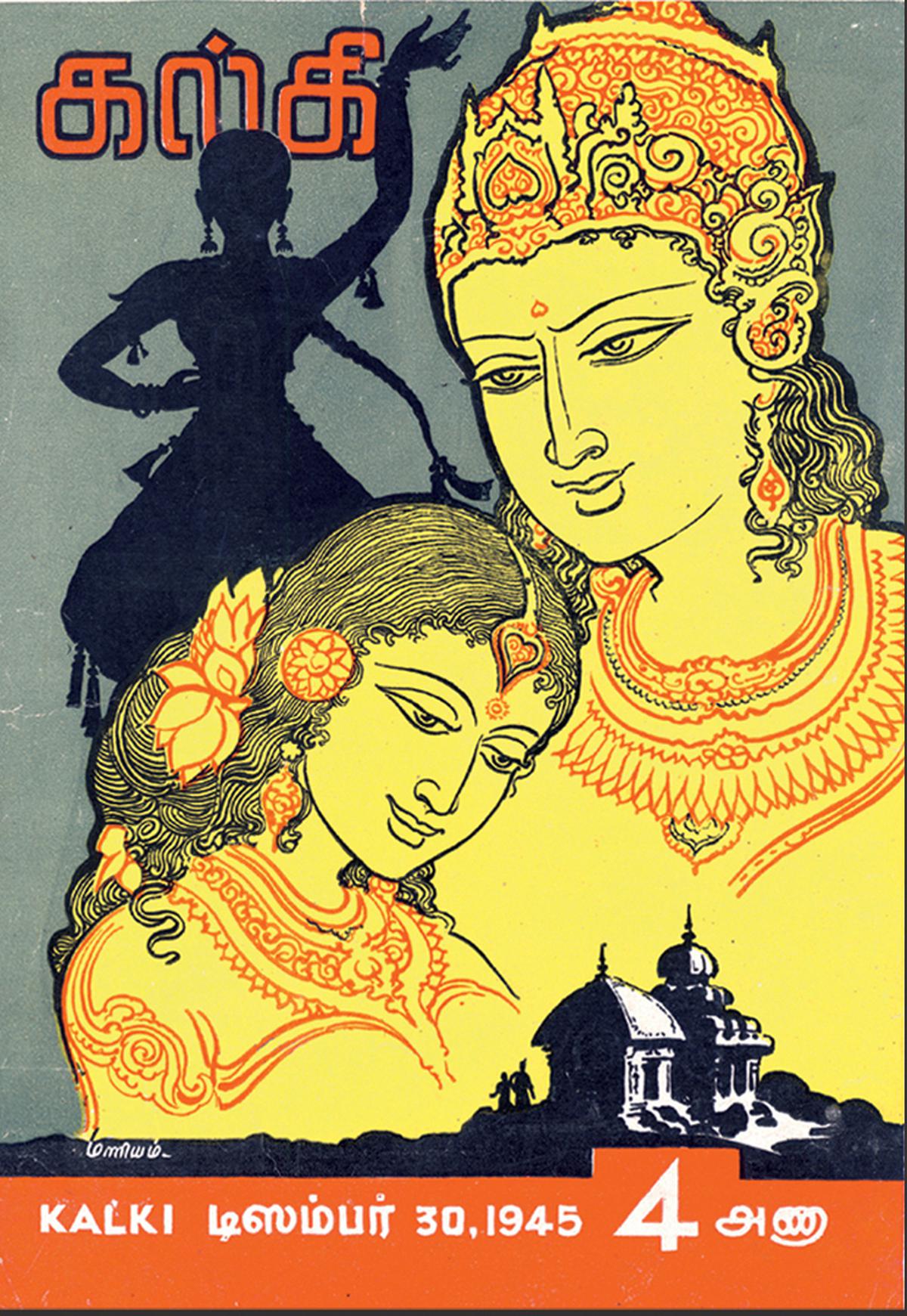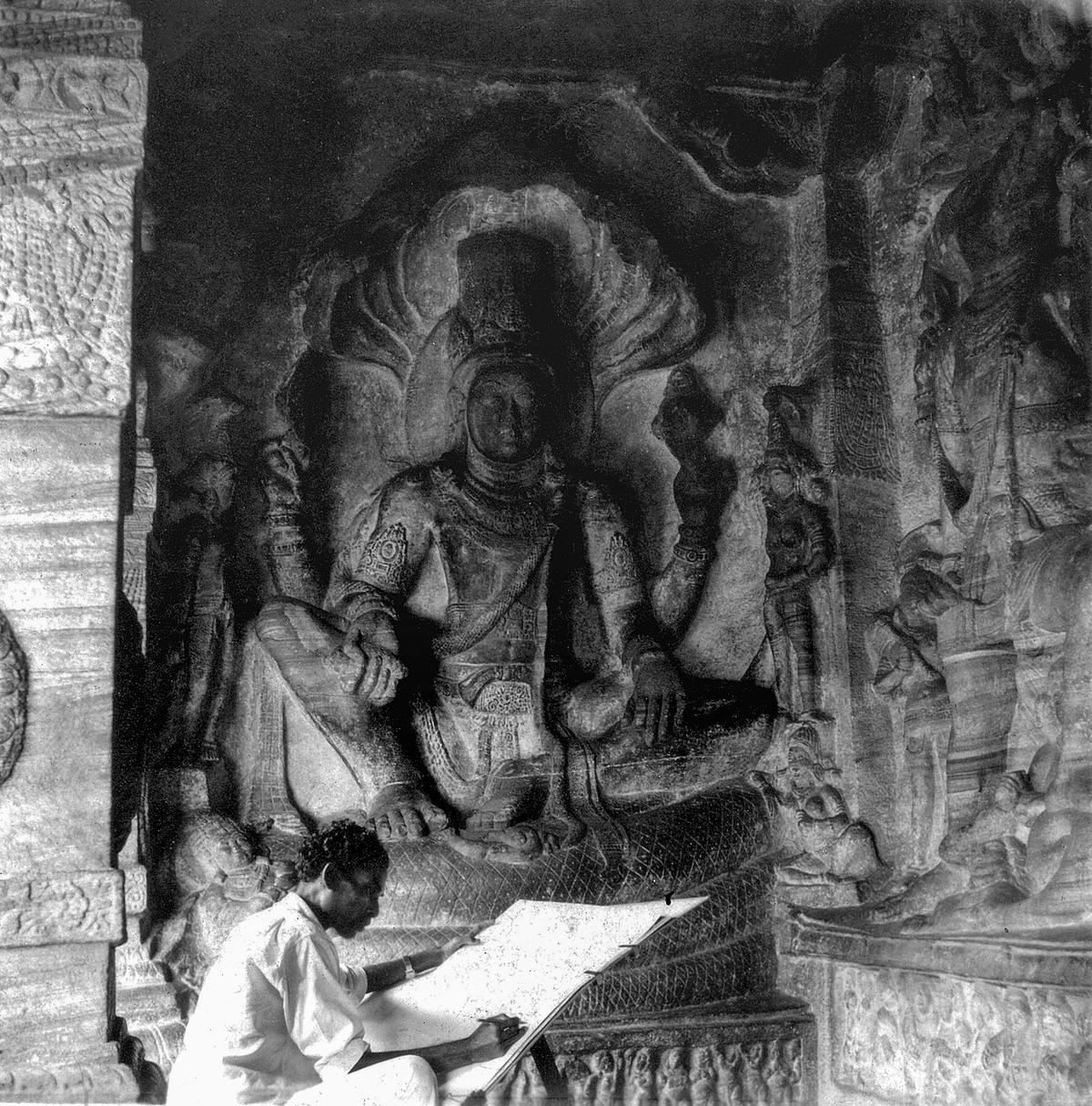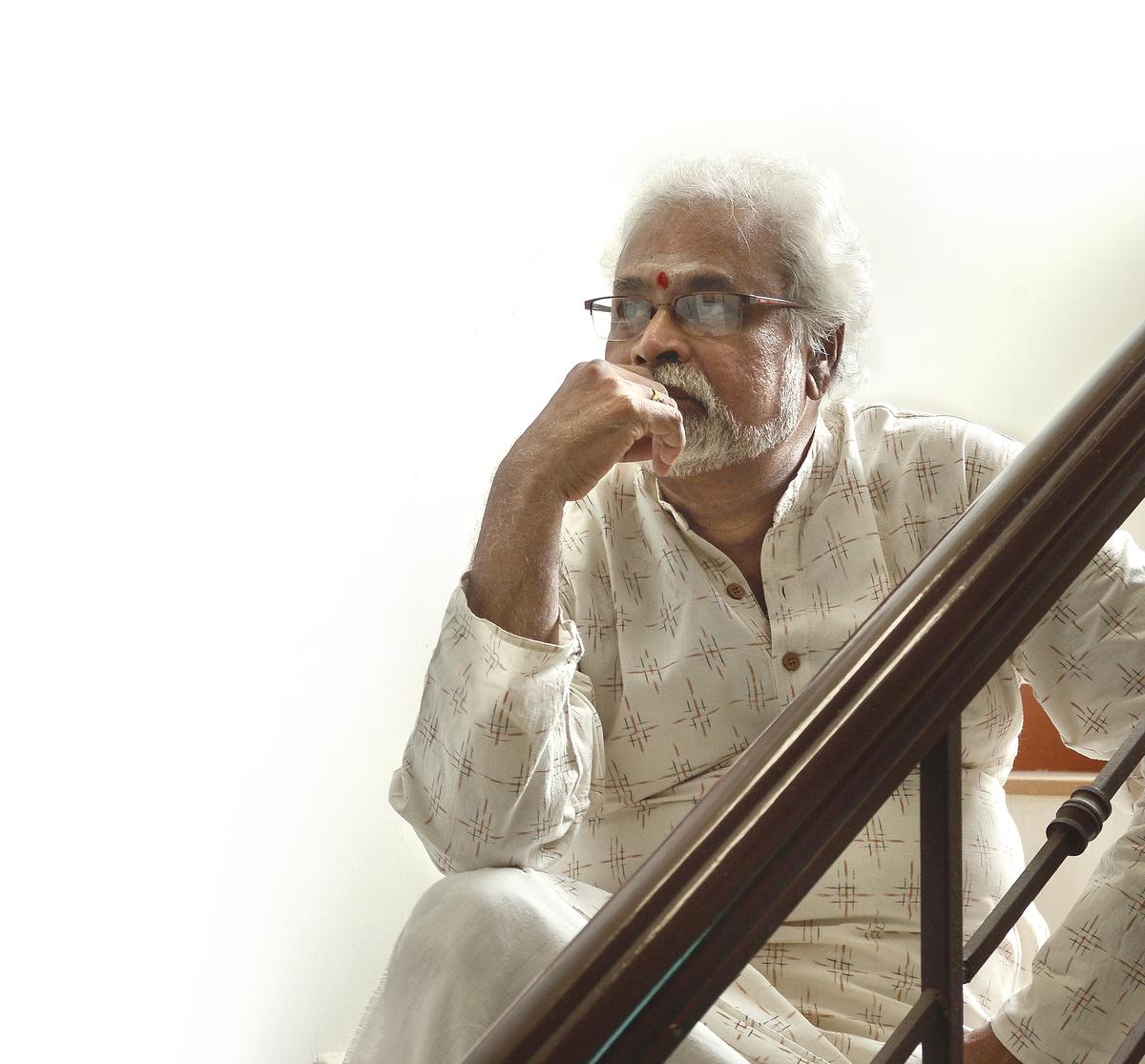It is not often that one gets to meet a living legend, whose parent is also a legend. And there is a plus when both belong to the same field. The offspring can speak with authority and clarity on the subject, art here. Maniam and Maniam Selven (Ma.Se.) are not new to the readers of this supplement but, this occasion is poignant. We are on the cusp of the legend’s birth centenary and his family, led by son and master-artist Maniam Selven, and grandchildren are celebrating it. And Ma.Se., who never tires of speaking about the greatness of his father, thinks he has not said enough. He is finding new dimensions and fresh insights as he delves into his father’s monumental contribution.
Maniam, certainly, was far ahead of his time. His life span (1924-1968) was short but this had nothing to do with age, as often seen in the case of a genius. He packed into a career of 28 years, work that covered multiple media and breathed a style, which was a classic synthesis of various schools. From short story to serials, travelogue to tinsel, there was no area untouched by his art. And this when technology was nascent. His constant companion was a Baby Rolleiflex camera, purchased for a princely sum of ₹630 in 1948. “Photographs were his reference points because no other source was available,” says Ma.Se. He is rich with memories of his father’s salad years, when Maniam worked almost round the clock. “I was a small boy and had little understanding of what he was doing. As a student of art, I began to watch him with fascination but then he left us when I was 18. My mother Saraswati, who was a pillar of support, however, told me all about his career,” says Ma.Se.
Meeting Kalki

Kalki Krishnamurthy
| Photo Credit:
The Hindu Archives
Born to Umapathy and Gnanambal on January 26, 1924, Subramaniam’s initiation into art happened by observing uncle Lingaiah drawing scenes of Mylapore. With him was school mate S. Rajam, who would become a celebrated musician-artist. Spotting his interest, the uncle enrolled him in the Chennai School of Arts. Rajam’s father Sundaram urged the boy to meet Kalki R. Krishnamurthi. Subramaniam, all of 17, met him at his house with his drawings. He wanted to get them published in Kalki, which had been launched in 1941. Looking at his portfolio, Kalki said, “Join the magazine as a staff member.” His course at the art school? “Well, it’s your hand, not your diploma, which is going to draw,” quipped the author. The young boy picked up the gauntlet and joined Kalki. Thus was born an association, which not only flourished for several decades but also remained timeless.
The editor abridged the name as Maniam, whose illustrations started appearing in the magazine from the fifth week of its launch. The years — 1941-1957 — which Ma.Se. calls ‘gurukulavasam’, was a huge learning curve for the budding artist. “It was a golden period,” reminisces Ma. Se. “It looked as if they were on this earth for each other.” Maniam blossomed into a versatile artist under the guidance of the editor and co-founder Sadasivam. Not surprising that he was close to both families. He travelled extensively across South India. Visits to the Ajanta and Ellora caves opened new windows for Maniam, who absorbed the styles of the paintings and sculptures and used them with stunning effect. Mamallapuram was another favourite destination. His drawings filled the Deepavali special editions of Kalki. An illustration for Rajaji’s short story drew encomiums from the statesman. Incidentally, it was Maniam, who embellished Rajaji’s ‘Chakravarthy Tirumagan’ with drawings.
The turning point came when Krishnamurthi started writing Ponniyin Selvan (1950). Kalki had talented artists and Maniam was thrilled when he got the coveted assignment. For the lakhs of readers, Maniam’s illustrations came as the proverbial icing on the cake. He captured the essence of the week’s episode so well that just by looking at the picture one could guess what was happening. Ponniyin Selvan became part of Tamil lore not only because of Krishnamurthi’s story telling but the lively images created by Maniam. Kalki took Maniam along when he followed Vandiyathevan’s trail, through the south of India and Sri Lanka. That explains the minute details, a hallmark of Maniam’s style. History had consumed Maniam, who could recreate the past with his knowledge and fertile imagination.

Maniam’s illustration for Sivakamiyin Sabatham
| Photo Credit:
Courtesy: Ma.Se
Lifelike drawings
The key characters, male and female, were etched distinctly. Arulmozhi Varman, Karikalan and Maduranthakan were all princes but had subtle differences. The drawings spoke through their body language and facial expressions. Vandiyathevan was both a warrior and a resourceful spy but Maniam also showed his nonchalance and mischievous humour. Personal traits might define Nandini and Kundavai but Maniam’s strokes had something for love-lorn Vanathi too. Boat woman Poonkuzhali was simple and rustic but intelligent. They were all sensual but not vulgar. Precisely why the entire family could enjoy the story.
Although it was Varma, senior artist at Kalki, who did the illustrations for Sivakamiyin Sabatham, Krishnamurthi’s another historical magnum opus, Maniam was asked to provide visuals, which adorned the bottom of the page. The author honoured both artists when the final chapter was published by taking their works on the cover and acknowledging their contribution.
“I was born on October 27, 1950, the day ‘Ponniyin Selvan’ was launched in Kalki,” remembers Loganathan. “Years later, when I started my career, appa encouraged me to sign my name as M. Selvan (Maniam’s son). I signed as Maniam Selven before settling down with Ma.Se. It was not a spur of the moment decision on his part, I realised when I happened to read his journal, long after his demise. Under the date, he had written, ‘Maniam Selvan is born,’” he adds.

Maniam sketching during his visit to Badami
| Photo Credit:
Courtesy: Ma.Se
It was in 1957, two years after Kalki passed away, that Maniam was approached to work as art director. The film was Parthiban Kanavu. Maniam, who did not do the illustrations for Kalki’s novel (on which the film was based), embraced the opportunity. According to Ma.Se., his father did not stop with just providing sketches, be it sets or costume design. He crafted every piece with such precision that many became show pieces. The layouts, cut-outs and calligraphy he created for the film’s promotion were outstanding.
The years, 1957-1968, found Maniam at his best as a freelancer. His works continued to adorn Kalki’s Deepavali specials and the magazine’s silver jubilee edition. Such assignments took him to Hampi and Badami. He returned richer in insight, which reflected in his creations during this period.
The relentless work took a toll on Maniam’s health. When ‘Ponniyin Selvan’ was re-launched in 1967, Maniam was brimming with fresh ideas but was in no condition to execute. “He was heartbroken and persuaded me to book train tickets to Thanjavur — to revisit the places but never made the journey,” says Ma.Se. The legend passed away on September 29, 1968, but not before handing over the baton to his son.

Maniam Selven
| Photo Credit:
K.V. SRINIVASAN
Maniam 100
Maniam Selven has been working relentlessly for the centenary. Through ‘Maniam 100,’ YouTube channel, he is taking viewers into the aesthetic world of the legend. The highlight of the celebration, culminating in December, will be an exhibition of Maniam’s oeuvre in Chennai. ‘Sarithiram Padaitha Chitirangal,’ a compilation of Ma.Se.’s articles on his father’s works, published in Tamil magazine, Amudasurabhi, will be released. Also on the anvil is a coffee-table book containing 100 creations from Maniam’s collection
Stay connected with us on social media platform for instant update click here to join our Twitter, & Facebook
We are now on Telegram. Click here to join our channel (@TechiUpdate) and stay updated with the latest Technology headlines.
For all the latest Art-Culture News Click Here
